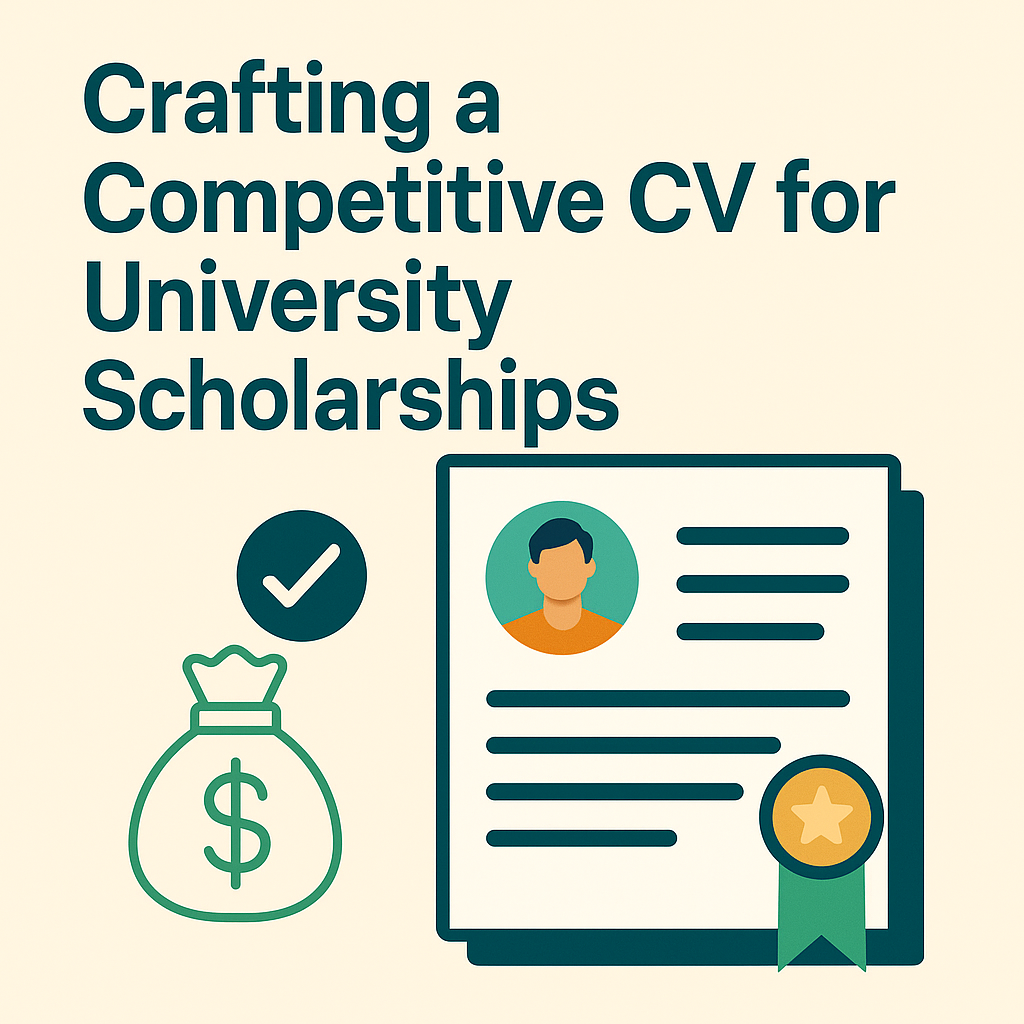1. Introduction
A well‑crafted CV is essential for university scholarship applications, internship opportunities, and program submissions. It highlights your academic achievements, extracurricular engagement, and unique skills in a concise, organized format that captures decision‑makers’ attention.
In this guide, we’ll walk through each section of a scholarship CV personal statement, education, experiences, skills, and references providing tips, examples, and templates to ensure your CV stands out in competitive applicant pools.
2. Key CV Sections and Best Practices
2.1 Contact Information and Personal Statement
- Contact Details: Full name, professional email, LinkedIn or personal website.
- Personal Statement: 3–4 sentences summarizing goals, strengths, and motivations.
2.2 Education Details
- List institutions in reverse chronological order.
- Include relevant coursework, GPA (or class ranking), and academic awards.
2.3 Experience and Leadership
- Extracurriculars: Clubs, societies, volunteer roles with action verbs (led, organized).
- Work Experience/Internships: Responsibilities and achievements; quantify with numbers.
2.4 Skills and Certifications
- Technical Skills: Software, lab techniques, programming languages.
- Soft Skills: Communication, teamwork, problem solving demonstrated through examples.
2.5 Projects and Publications
- Highlight research, capstone projects, or significant assignments.
- Cite presentations or articles; include links where possible.
2.6 References
- Provide 2–3 referees with name, title, institution, and contact email (with permission).
3. Formatting and Layout
3.1 Visual Design
- Use clean, professional fonts (Arial, Calibri); consistent font sizes.
- Adequate spacing and clear section headings.
3.2 Length and Conciseness
- Aim for 1–2 pages; tailor content to the opportunity.
- Use bullet points; avoid large text blocks.
3.3 Customization
- Tailor CV for each scholarship or program; emphasize relevant experiences.
- Mirror keywords from application guidelines.
4. Examples and Templates
4.1 Sample CV Layout
| Section | Content Example |
|---|---|
| Personal Statement | “Aspiring environmental scientist with 3 years’ research experience in biodiversity.” |
| Education | B.Sc. Biology, University of Lagos, 4.2/5.0 GPA |
| Experience | Vice President, Biology Club (Led 20 members in projects) |
| Skills | R programming, GIS mapping, public speaking |
| References | Dr. Jane Doe, Lecturer, Dept. of Biology, support@dailyschoolgist.com |
4.2 Action Verb List
- Leadership: led, coordinated, facilitated
- Research: analyzed, investigated, documented
- Communication: presented, authored, collaborated
4.3 Common Pitfalls
- Overloading with irrelevant details.
- Inconsistent formatting; typos.
5. Tailoring for Scholarships
5.1 Aligning with Criteria
- Identify scholarship values: leadership, community service, academic excellence.
- Emphasize matching experiences.
5.2 Demonstrating Impact
- Quantify achievements: “Increased club membership by 30%.”
- Include testimonials or awards.
5.3 Supplementary Materials
- Attach transcripts, recommendation letters, and portfolios when requested.
6. Conclusion
A competitive scholarship CV combines clear organization, tailored content, and compelling evidence of achievements. By following best practices in structure, design, and personalization, you’ll present a professional profile that resonates with selection committees.
Begin crafting or refining your CV today: choose one section to enhance with quantifiable achievements. Your path to scholarship success starts with a standout CV.
